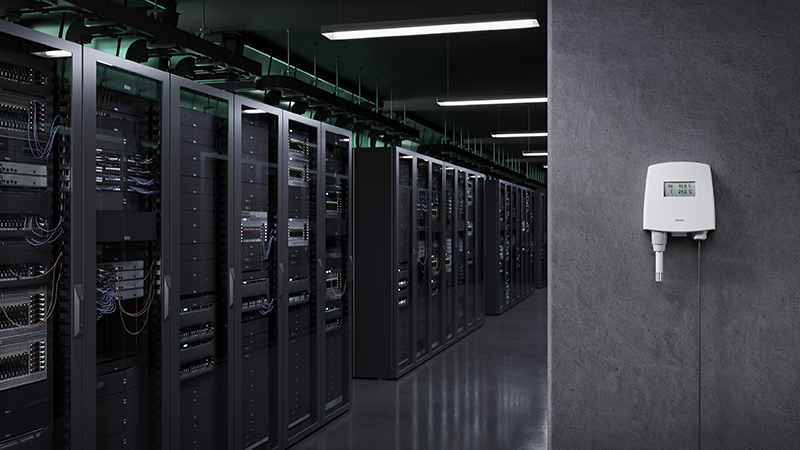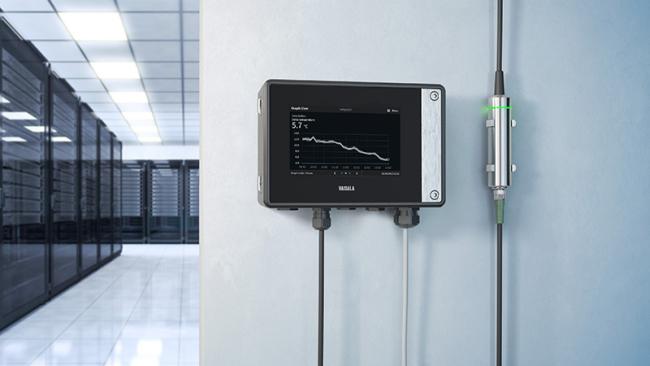As the need for computing power increases worldwide, energy consumption in data centers is set to rise too. These energy-intensive facilities already have a pressing need to lower energy consumption and become more sustainable – and the right HVAC sensors can help. While it is crucial to prioritize reliability, accuracy, and measurement stability in sensors, it is important to consider modularity as well.
Lifecycle benefits
Sensors are a relatively small investment in the context of data center projects, so their importance is often overlooked – but their impact on energy efficiency can be enormous. Taking time to choose the right sensors can have a significant impact on your bottom line and the sustainability of your operations. Contractors may not think about the whole lifecycle of your system, but you’ll unlock significant benefits if someone does.
While the reliability, accuracy, and stability of measurements remain paramount in the selection of HVAC sensors, another important factor to consider is modularity. A modular sensor solution gives you the flexibility to change sensor types and locations, expand your system when your data center grows or changes, and allows you to calibrate your sensors easily. Being able to adjust your system easily can help you save money in the long run. In the complex world of data centers, considering modularity in sensor selection is like having a key to unlocking efficiency, sustainability, and smart financial choices.
Convenience through modularity
Modularity and convenience go hand in hand. When components can be easily exchanged, you don't have to replace the entire instrument just to calibrate or adjust a measurement parameter. Take, for instance, a modular industrial transmitter like those found in the Vaisala Indigo family. These transmitters can work with any compatible measurement probe, allowing you to switch probes whenever necessary. This flexibility and adaptability offer a high level of sophistication in conducting various measurements.
Likewise, consider a modular HVAC transmitter equipped with interchangeable measurement probes, such as the HMT120 transmitters designed for critical buildings. This type of transmitter supports multiple applications and locations using a single instrument. Utilizing a cable with the measurement probe also gives you the flexibility to use the measurement outdoors or in a duct for example, while keeping the transmitter in a more comfortable location to see the values on the display. The ability to swap probes effortlessly enhances the versatility of the system, providing a seamless solution for diverse measurement needs in different environments.
Modularity offers another practical advantage: When you want to send a measurement probe to be calibrated for example, you can easily switch to another and keep the transmitter in use. When changing probes, you may require a calibration certificate so you know that your probe is factory-calibrated, giving you confidence that your measurements will remain accurate.
Easy to install, update, and expand
Daisy-chaining of smart sensors elevates modularity also to the system level and introduces unprecedented levels of flexibility and productivity. With field bus-connected transmitters featuring user-friendly plug & play connectors, the installation process becomes a straightforward click-and-go experience. This not only simplifies the installation but also establishes a highly modular and flexible system that can effortlessly adapt to changes and expansions.
Sometimes size also matters: Luckily, for instance the sensor chain for aisle and server rack monitoring allows you to choose between standard-sized HMW110 transmitters with a display and miniature-size HMP113 measurement probes, to form a modular solution for critical buildings. Transmitters and measurement probes are easily connected and chained using standard connectors, and installation is further supported through magnetic attachment units and cable accessories.
Monitoring existing systems
As well as using sensors to control HVAC systems, you can also use them to monitor your existing system. Jade Smart Cloud is a monitoring system equipped with wireless data loggers that you can use to verify your indoor conditions. For example, you may want to check the measurement values in a certain location, or to verify conditions by checking what the building management system sensors are showing and whether there is a problem with the existing system. Identifying any anomalies early prevents damage or inefficiencies in the longer term. Monitoring existing conditions over time can also help you plan future system improvements.
With Jade Smart Cloud you can view values and trends on either your mobile phone, laptop, or tablet. For measurement, you’ll need data loggers and a cloud access point that collects the values from the loggers and sends them to the cloud software service. The CA10 cloud access point can connect up to 32 data loggers and has an indoor range of over 100 m with LoRa radio. CWL100 wireless data loggers have a one-minute measurement interval and support various measurement probe types, providing high-quality, industrial-grade reference measurements that you can rely upon to compare against.
It’s worth noting that you don’t need to set this up as a fixed installation – it can also be temporary. The magnetic mounting option on the loggers is very convenient, for example in data centers as there is usually somewhere to attach the device to start logging and measuring over a week or two, or maybe longer. You’ll get real-time measurements, see trends, and view alerts and reports – also remotely. When you have tested your target area you can then move the loggers to a new location.
Remote monitoring in this way can help to:
- Verify indoor conditions
- Identify anomalies
- Prevent damage or health impacts
- Perform temperature mapping
- Gather data for predictive maintenance
- Validate an existing control system
- Plan for system improvements
- Easily monitor your building conditions
If you’d like to know more about the importance of modularity in sensor selection, get in touch.




